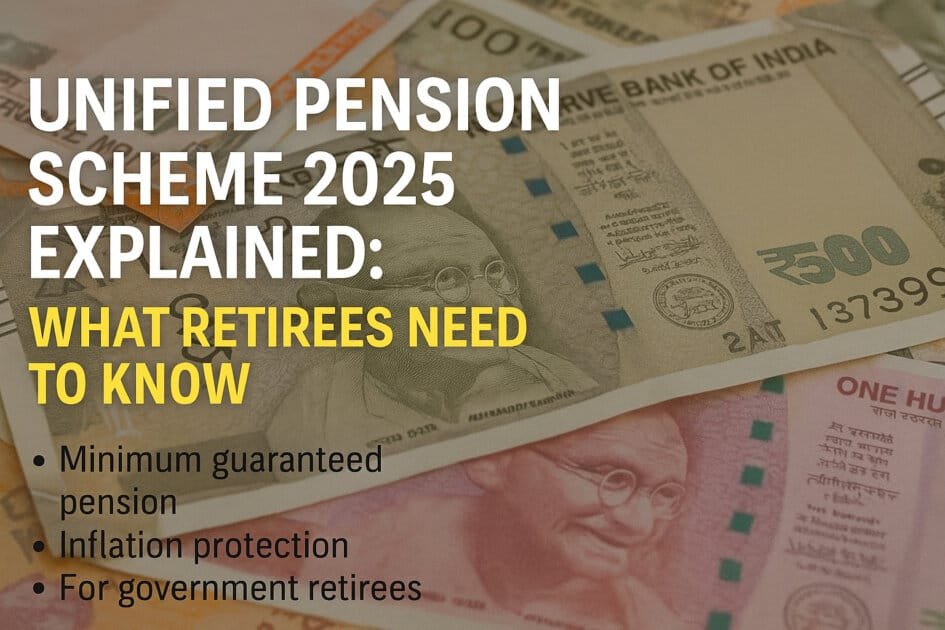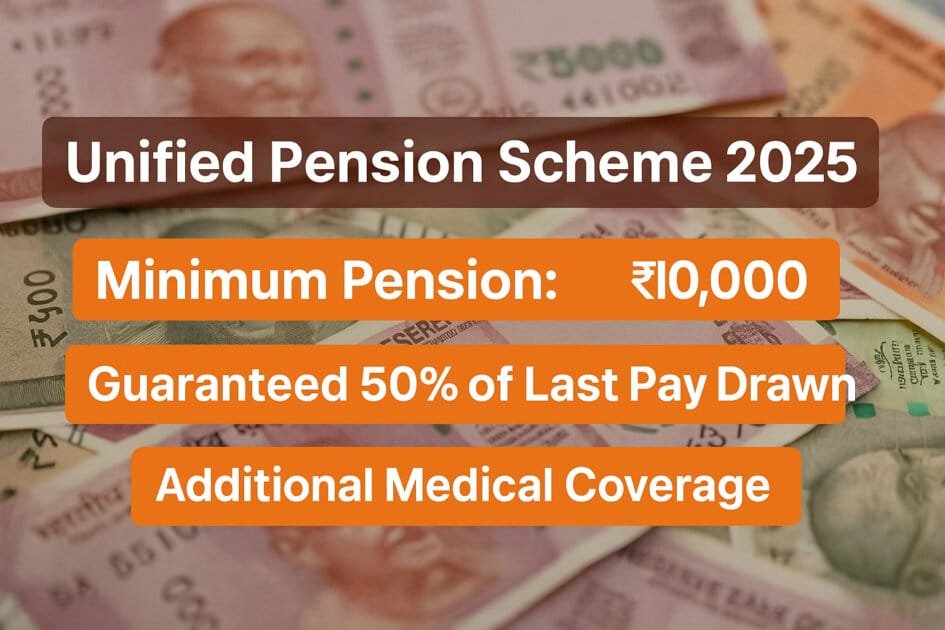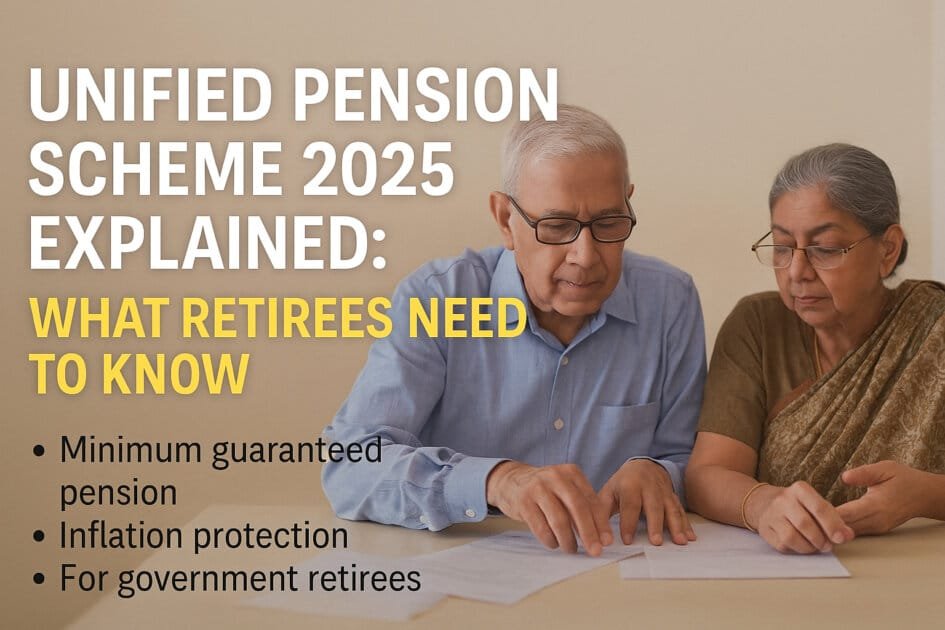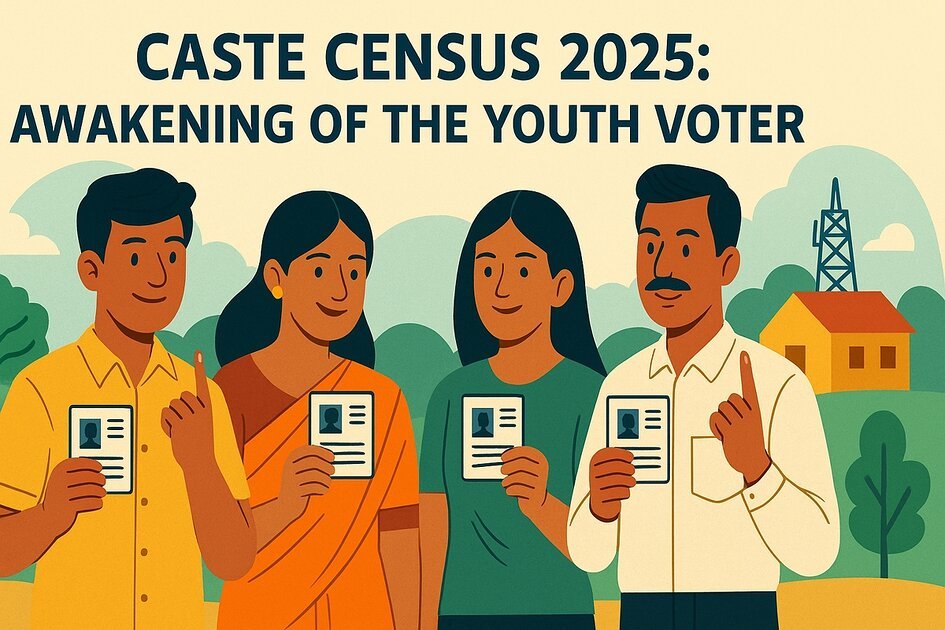The Unified Pension Scheme 2025 is a new retirement benefits framework approved by the Union Government to harmonize pension structures across different employment generations. It blends features from the Old Pension Scheme (OPS) and the New Pension Scheme (NPS) while adding inflation-protection and basic-income guarantees.
It was officially announced during the Union Budget 2025 and is expected to become fully operational from April 1, 2026, alongside the 8th Pay Commission rollout.
Why Was It Introduced?
For years, there has been a growing demand from public servants to restore the Old Pension Scheme, which provided defined benefits. However, the government sought a fiscally viable yet socially just model—thus giving birth to the Unified Pension Scheme (UPS).
Key reasons:
- Rising inflation and lack of post-retirement security in NPS
- Massive protests by employees’ unions and teachers’ associations
- Political pressure from state-level OPS restorations
- Recommendations from expert panels in 2024

How It Differs from NPS and OPS
| Feature | NPS | OPS | Unified Pension Scheme (UPS) |
|---|---|---|---|
| Nature of Benefit | Market-linked | Defined benefit | Hybrid (Guaranteed + Flexible) |
| Inflation Protection | ❌ Not guaranteed | ✅ Yes | ✅ Indexed to CPI |
| Employer Contribution | ✅ Yes | ❌ No | ✅ Yes |
| Pension Calculation | Based on corpus | 50% of last drawn salary | Minimum 50% + inflation index |
| Commutation | Partial withdrawal | Lump-sum possible | Allowed |
| Gratuity & DA | Partial | Full | Full eligible benefits |
Eligibility Criteria and Coverage
- Central government employees who joined after 2004 (currently under NPS)
- All new entrants joining after April 2026
- Voluntary switch allowed for current employees under NPS
The scheme is applicable to:
Key inclusion:
- Defense personnel
- Teachers (KVS, NVS, SSA)
- Railways, postal, PSUs (if adopted)
Benefits for Retirees and Pensioners
Under the Unified Pension Scheme:
- Pensioners will receive a minimum of 50% of last drawn basic pay
- Annual revision tied to the Consumer Price Index (CPI)
- Gratuity and DA will be applicable post-retirement
- Provision for spouse/family pension upon death
- Pension account can be digitally accessed and transferred across states
📌 Learn how the new Unified Pension Scheme affects retirees under the 8th Pay Commission.
Impact on the 8th Pay Commission
The 8th Pay Commission, scheduled for implementation around FY 2026–27, will base pension revisions under UPS for eligible retirees. This means:
- Automatic migration to 50% base pension
- Fitment factor for pension likely between 1.83 and 2.5
- Simplified pension calculation for uniformity
This will eliminate the confusion of dual systems (OPS vs NPS) that existed after the 6th and 7th Pay Commissions.

Fiscal and Administrative Implications
While the UPS ensures social equity, it does come with fiscal costs:
- Estimated ₹1.2–1.5 lakh crore annual burden
- Revised actuarial liabilities for government
- State governments may replicate or opt-in voluntarily
- Pension Fund Regulatory and Development Authority (PFRDA) may need restructuring
Criticism and Concerns
Not everyone is celebrating the UPS:
- Private-sector employees feel excluded
- Critics argue it could still be underfunded in the long run
- Some experts warn of a silent return to unsustainable OPS
- Teachers and contract workers (e.g. Shikshamitras, Anudeshaks) demand full OPS restoration
What Comes Next?
- Implementation guidelines expected by December 2025
- Digital pension cards and UPS online portal to launch soon
- Integration with DigiLocker and Aadhaar for portability
- UPS pension statements will be linked to Unified Payroll System
A Step Towards Pension Justice?
The Unified Pension Scheme 2025 represents a bold step towards a balanced, secure, and modern pension framework. While it won’t please everyone, especially those demanding full OPS restoration, it strikes a middle path between equity and affordability.
For retirees and upcoming pensioners, this scheme promises dignity, consistency, and predictability—values that had become increasingly rare in India’s pension landscape.
Table of Contents
AryaLekh (DoFollow):
- 8th Pay Commission 2025 Salary and Pension Hike
- India’s Fiscal Deficit and Budget Planning 2025
- 7th Pay Commission Impact & Analysis



